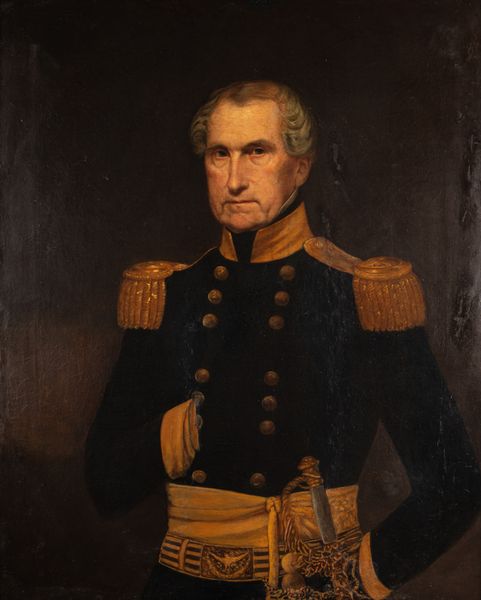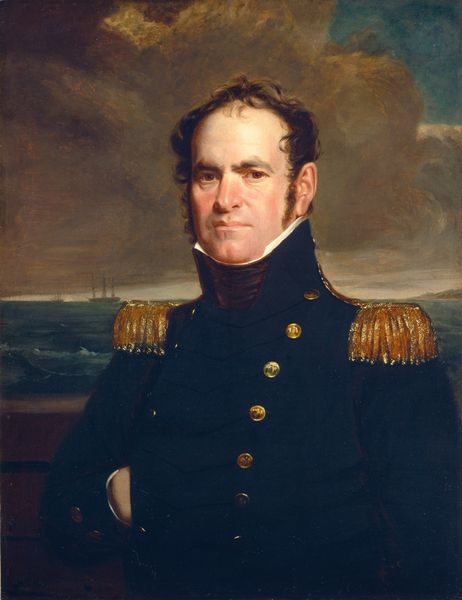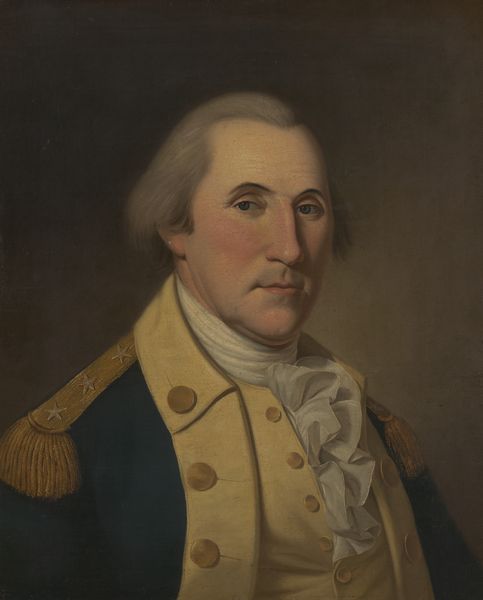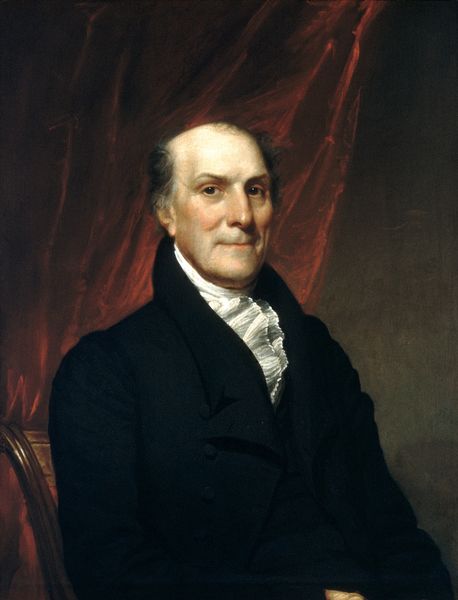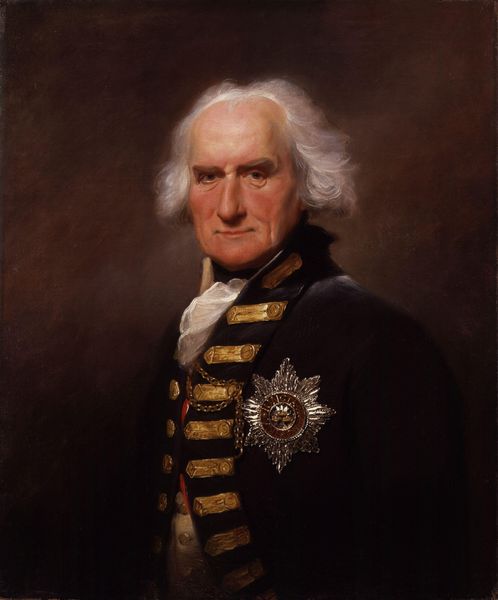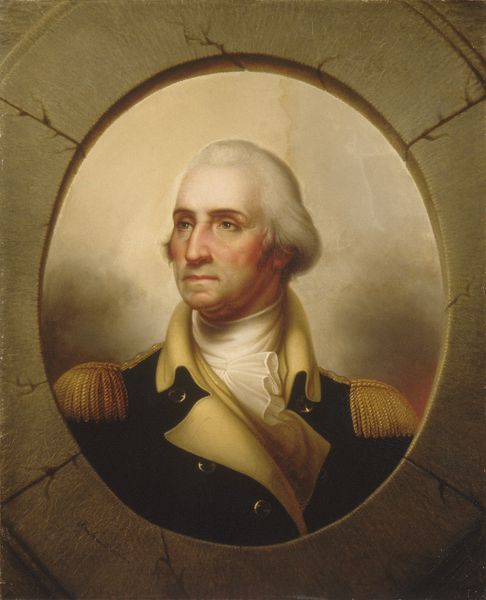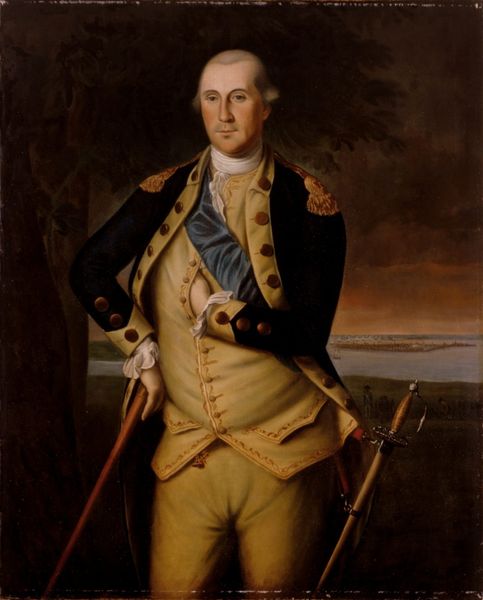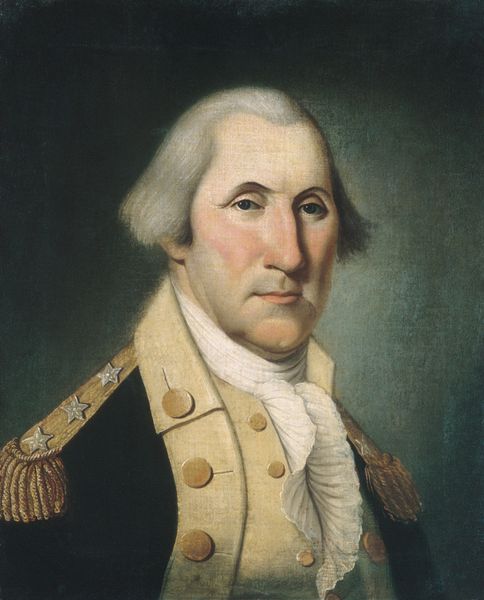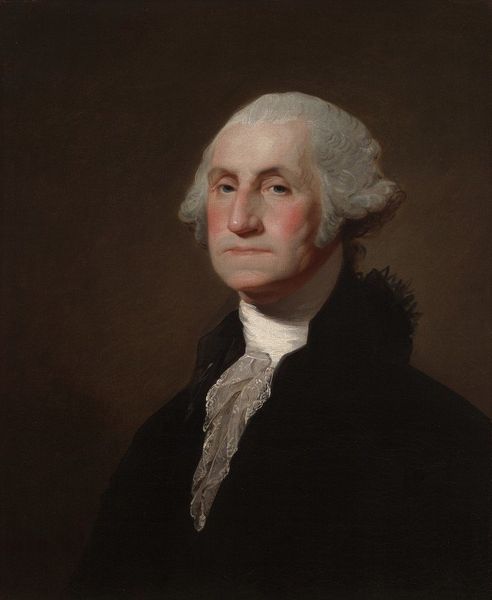
Dimensions: 33 3/4 x 26 7/8 in. (85.7 x 68.3 cm)
Copyright: Public Domain
Editor: Here we have Robert Walter Weir's portrait of "General Winfield Scott," painted sometime between 1852 and 1855. There's something almost stoic about his expression, despite the elaborate gold trim on his uniform. What's your read on this piece? Curator: Considering the period, this portrait speaks volumes about the construction of military heroism in American society. The choice of Weir, an established artist known for history paintings, reinforces the institutional backing of Scott's image. Note the dark background; it's not just stylistic, but indicative of the power structures at play. The portrait was commissioned during a time of intense national identity formation and growing political tension – can you see how that might be relevant? Editor: You mean with the looming Civil War? How does Scott fit into all of that? Curator: Exactly. Scott was a towering figure, literally and figuratively, yet also a symbol of the establishment that was being questioned. By showcasing him in this manner, what narrative is the Met – and Weir, by extension – perpetuating or perhaps even challenging? Was this intended to evoke national pride, or was it something more complex? Editor: That's fascinating, the idea of the portrait functioning as a statement within the context of a rapidly changing nation. I never really considered portraits as potentially controversial. Curator: The seemingly simple act of portraying someone always involves a negotiation of power and meaning, doesn't it? Especially someone with political weight. We aren’t simply viewing an image; we’re seeing a curated projection, caught between ambition, preservation, and looming social rupture.
Comments
No comments
Be the first to comment and join the conversation on the ultimate creative platform.
